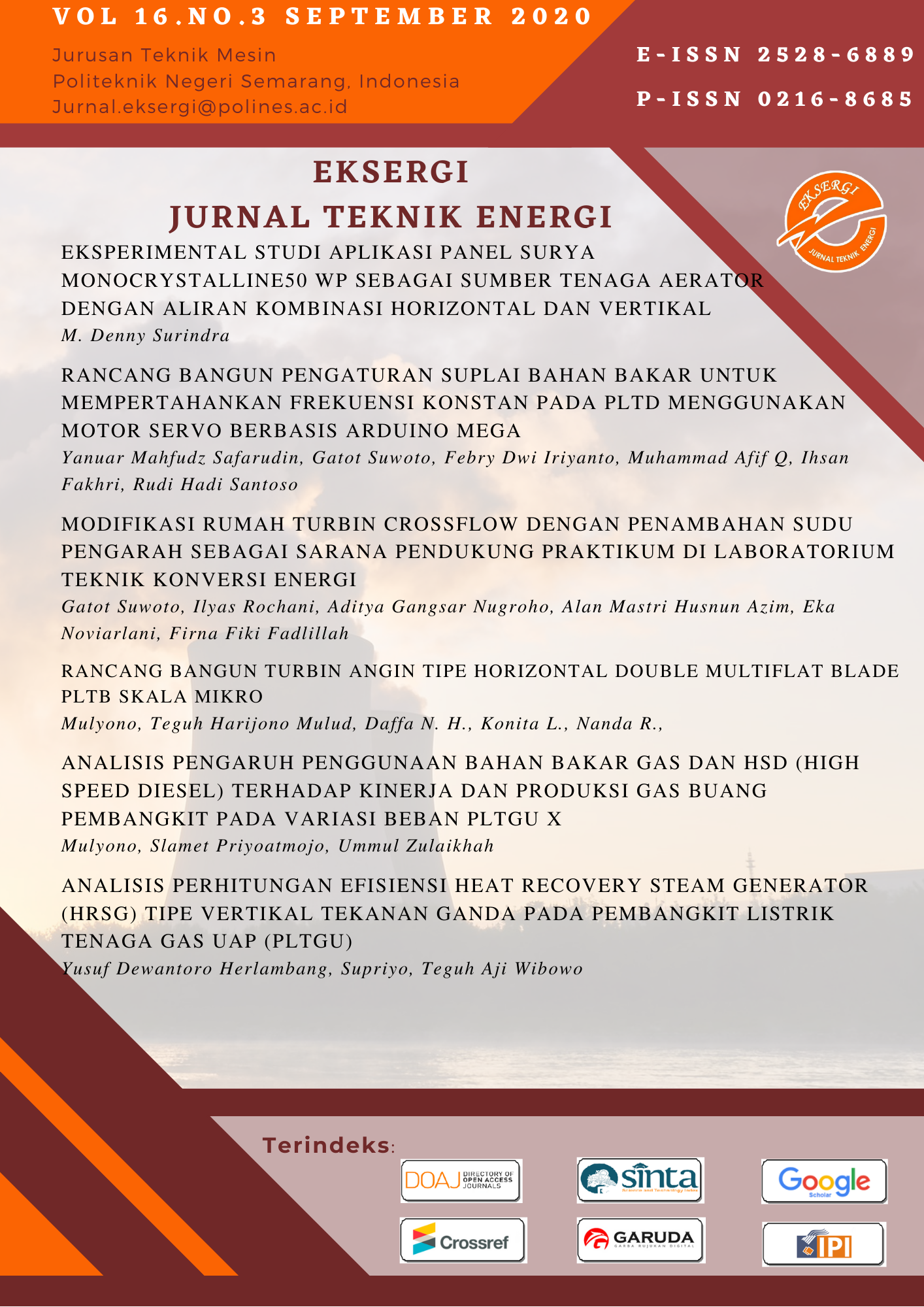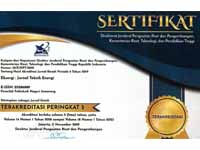MODIFIKASI RUMAH TURBIN CROSSFLOW DENGAN PENAMBAHAN SUDU PENGARAH SEBAGAI SARANA PENDUKUNG PRAKTIKUM DI LABORATORIUM TEKNIK KONVERSI ENERGI
DOI:
https://doi.org/10.32497/eksergi.v16i3.2215Keywords:
Turbin Crossflow, Sudu Pengarah, Head Konstan.Abstract
Penelitian ini bertujuan untuk meneliti karakteristik turbin crossflow pada Laboratoium Teknik Konversi Energi Politeknik Negeri Semarang, dimana besar luas penampang nosel turbin crossflow tidak bisa diatur sehingga tidak dapat dioperasikan pada head konstan dengan debit yang variabel, maka rumah turbin crossflow perlu didesain ulang agar luas penampang nosel dapat diatur melalui penambahan sudu pengarah pada nosel tersebut. Dari perancangan rumah turbin yang kami buat, besar luas penampang nosel dapat diatur sehingga dengan adanya penambahan sudu pengarah tersebut, maka ketika debitnya berubah dapat diatur ulang besarnya luas penampang untuk menjaga agar head konstan dengan membuka sebagian katup bypass sehingga dapat dilakukan pengujian sistem PLTA seperti kondisi yang ada di lapangan yaitu H = konstan dan V = konstan. Data dari pengujian dibuat grafik hubungan antara efisiensi sistem terhadap debit dan grafik hubungan antara efisiensi sistem terhadap daya listrik. Dari grafik pengujian tersebut diperoleh karakteristik sistem PLTA dengan efisiensi tertinggi pada head 6,018 m ketika debit m3/s yaitu 21,25 %.Downloads
Published
Issue
Section
License
Authors who publish with this journal agree to the following terms:Authors retain copyright and grant the journal right of first publication with the work simultaneously licensed under a Creative Commons Attribution License that allows others to share the work with an acknowledgement of the work's authorship and initial publication in this journal.
Authors are able to enter into separate, additional contractual arrangements for the non-exclusive distribution of the journal's published version of the work (e.g., post it to an institutional repository or publish it in a book), with an acknowledgement of its initial publication in this journal.
Authors are permitted and encouraged to post their work online (e.g., in institutional repositories or on their website) prior to and during the submission process, as it can lead to productive exchanges, as well as earlier and greater citation of published work (See The Effect of Open Access).







